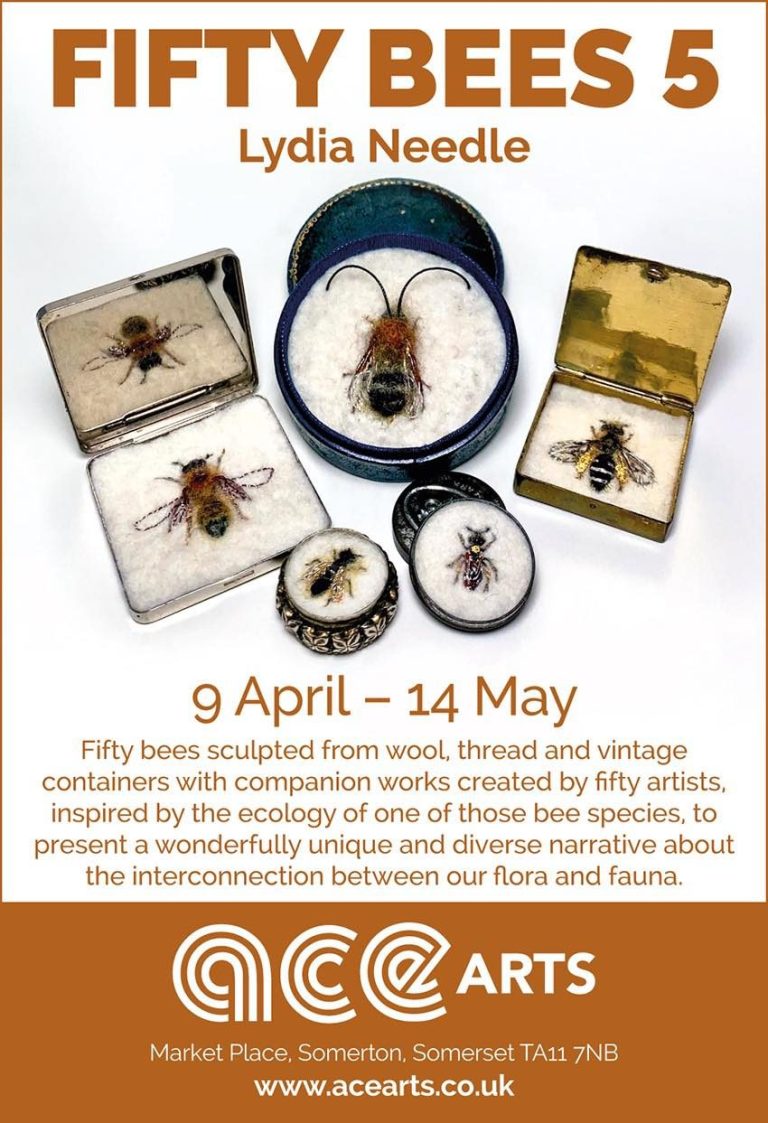Miner Problems?
Andrena tridentata –
Pale-tailed Mining Bee (2022)
Exhibited: Fifty Bees Project v.5. Ace Arts, Somerton, Somerset,
9th April - 14th May, 2022.
[tripod, telescope, mobile phone audio, poster]
Despite having a considerable background in and knowledge of the science and practice of biodiversity conservation acquired during an academic career, as I researched my allocated species, A. tridentata, even I was amazed at the high number of bee species recorded in the UK and Europe.
For the family Andrenidae, nearly 600 in Europe and 70 in the UK. Moreover, as I explored further, I was taken aback by the sheer paucity of knowledge concerning virtually all of them – particularly given their important role as plant pollinators, and how much we ‘all love bees’. Using images from the Natural History Museum’s specimen collection and expert witness interview material, my piece represents the poorly focused, distorted, monocular and misdirected public perception of the bee as an anthropogenic construct in the form of the honey bee; a happy cartoon image of which is seen through the telescope. It summarises the dearth of knowledge concerning most bees, which are solitary, Mining bees in particular, the genus Andrena, and ‘my’ species, A. tridentata. In addition, the expert audio edited from interviews with Dr. Gail Austin (DICE, University of Kent) and Dr. Joseph Monks (curator, Hymenoptera, Natural History Museum) poses important issues and problematises what we could and should do to conserve them.



© Copyright. All rights reserved.
We need your consent to load the translations
We use a third-party service to translate the website content that may collect data about your activity. Please review the details in the privacy policy and accept the service to view the translations.